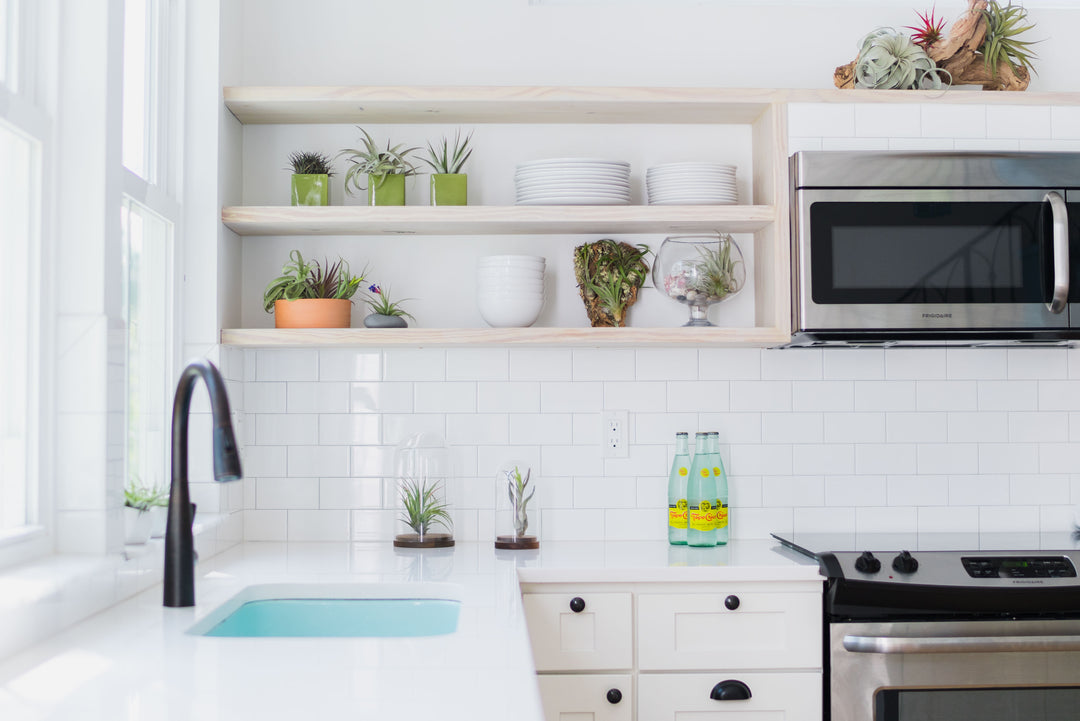
The Air Plant Blooming Process
Air plants start out as slow growers that need your patience, love and care to bloom.
Now you’re either asking one of these questions, “How do I make them bloom?'', "Is there a right way to nurture these air plants?” OR just waiting patiently for your Tillandsia to flower and wondering if you could do anything to hasten the process.
Sounds like you? Well, we got you covered...
Before Blooming
Let’s begin with some background check on the blooming process of air plants. Just like all flowering plants, they bloom at the beginning of their reproductive cycle. Here’s a fun fact for you; air plants bloom only once throughout their lifetime…amazing, right? They also produce different flowers which depend on their species. Most of these species produce beautiful flowers that come in diverse colors like pink, red, yellow and purple.
In the world of air plants, you’re sure to notice different bloom styles. For example, when the Capitata peach starts blooming, it’s pale pink in color with the flowers emerging from its center. In the case of the aeranthos and stricta, small buds tend to emerge from its center which later becomes larger and releases flowers when they open up. For some species, blooming lasts only a couple of days while others could last long up to some weeks.
Larger air plants like the caput-medusae and the xerographica have a longer cycle when it comes to blooming. They tend to grow large flower tracts known as “inflorescence” that can surprisingly be a foot tall or over for some species. The inflorescence contains the whole flower tracts which open up for the flowers to emerge with time. Some air plants have flower tracts that can last over a year.
After Blooming
After your air plants have completed their blooming cycle, you’re likely to notice ‘new growth’ off the sides, at the base or find them protected under leaves that are beginning to die off [so be careful when trimming your plants]. These are plantlets called “pups” which would mature later into adult air plants and repeat the growth cycle.
To hasten the growth stage after blooming, you can carefully cut off the flower tract that emerged from the air plant to quicken the offset stage. After blooming, air plants [depending on the species] would produce 1 to 3 offsets or pups on average. Once the offsets reach about 1/3 the size of the adult plant, you can snip them off or leave them [they would form a clump].
Making Your Air Plants Bloom
As long as your Tillandsia is healthy they would bloom in due time, this doesn't leave out the fact that they need to be cared for and have enough sunlight exposure for this to happen. You could also take advantage of diluted fertilizers to hasten the blooming process and the production of offsets or pups. For more tips on how to get your air plant to bloom, click here!
Nurturing Your Blooming Air Plants
We haven’t forgotten your million dollar question, “Is there a right way to nurture these air plants?” Well, first things first, don’t ever stop watering your air plants! As expected, your blooming air plants would need a little more water than usual as the energy is needed for the flower and the production of offsets or pups. Although, when it comes to watering, you need to be careful to not get the flower wet too. Why? Because having the flower soaked in water would cause it to wilt or rot.
So, instead of soaking up your air plant while it's blooming, you can mist using a spray bottle or hold under mildly running water to wet only the needed parts of the air plants.
It's important for your air plants to remain healthy and radiant, so, do well to look after them.
Even if your air plants haven’t started to bloom they’re still beautiful to behold, so relax and enjoy the journey.














Leave a comment